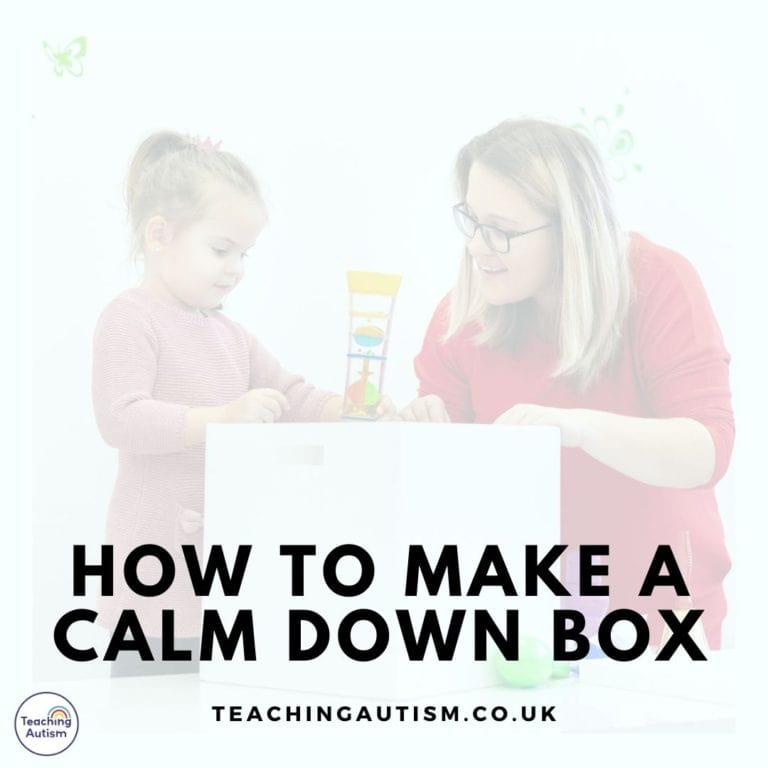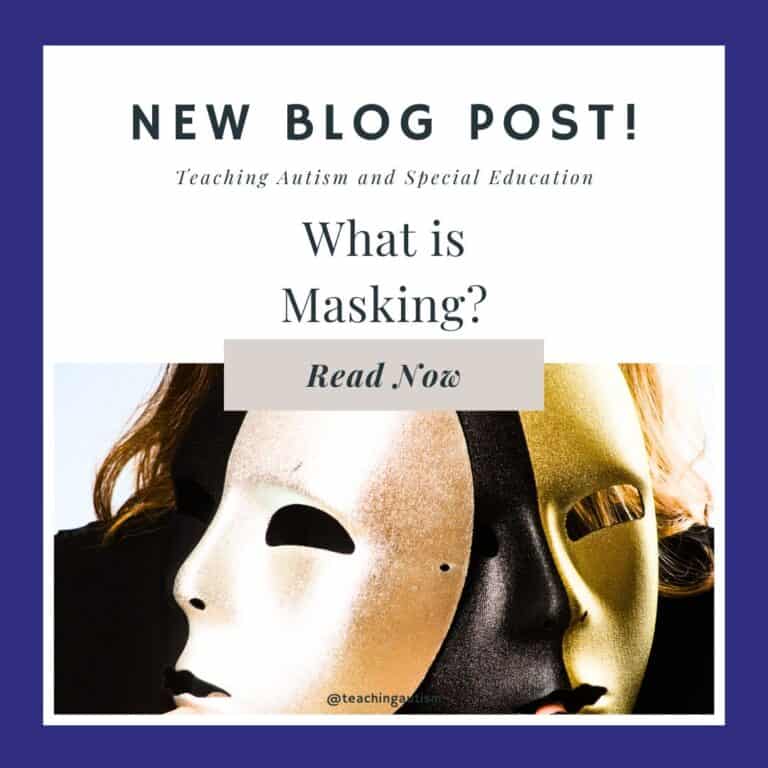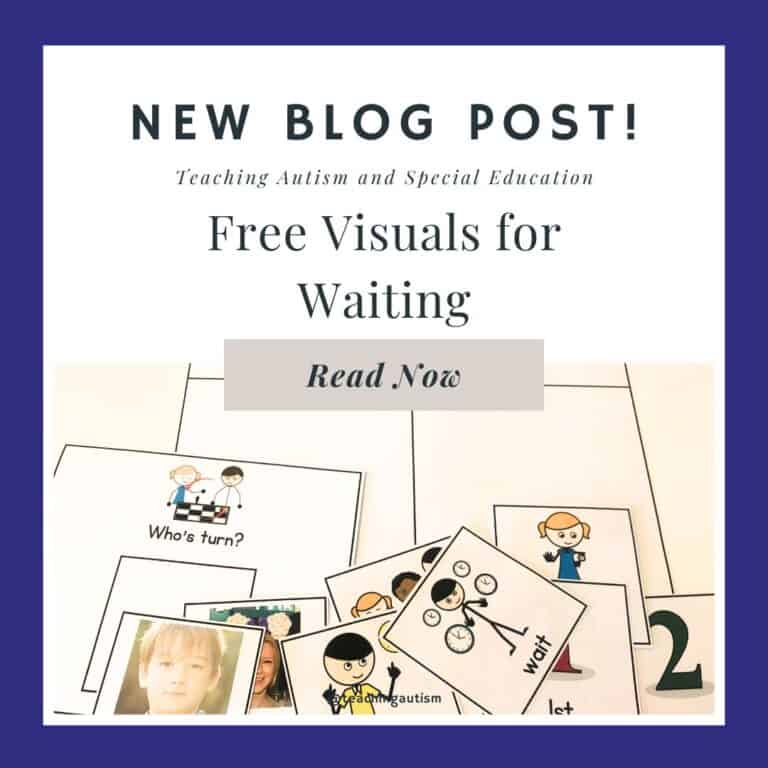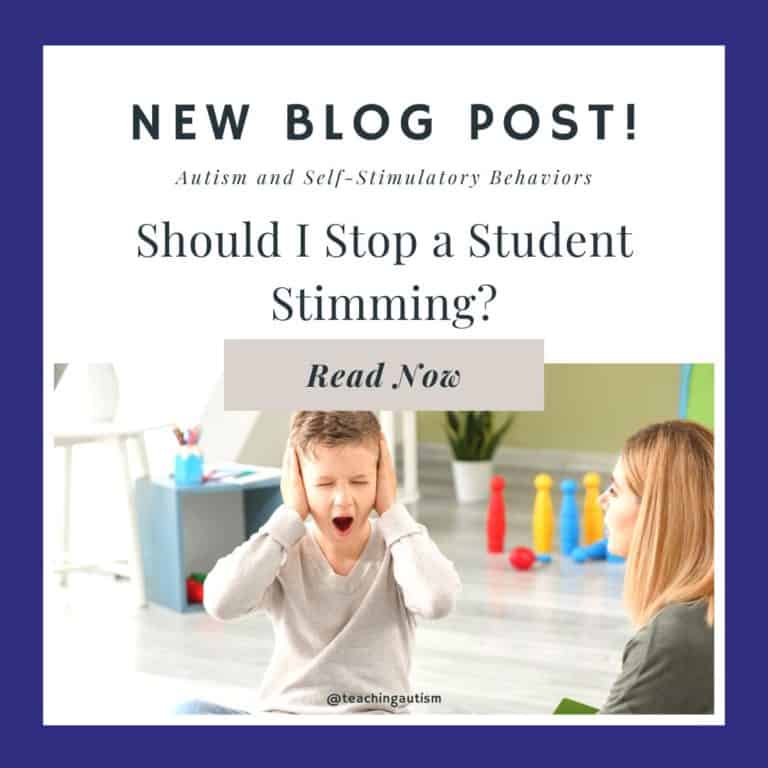Using Time Out Corners in Special Education
In this blog post today I’m going to be talking about using time out corners in special education. While this blog post is geared towards teachers, it can also be informative for parents considering using time out corners at home as well.
What is a Time Out Corner?
A time-out corner is a space in a classroom (or at home) where a child is sent to sit and reflect on their behavior after they have broken rules or exhibited a negative behavior.
While this may seem like a logical approach to discipline, it can be particularly harmful, and just the totally wrong consequence, especially for many of our autistic students.
Negative Reinforcement
Time-out corners are a form of negative reinforcement.
What is negative reinforcement?
Negative reinforcement is where we remove a negative stimulus – such as a child from the classroom – in order to encourage a particular behavior. And while this may seem like a good idea – it can be detrimental to the child. Especially for their self-esteem. Plus, it can even lead to increased negative behaviors.
Additionally, autistic students may struggle with sensory overload. And if they are being sent to a time-out corner to manage this.. This can just exacerbate this issue.
It is important to note that bright lights, noise, and just the general overstimulation of a classroom can be overwhelming for our autistic students. And then to be placed in a time-out corner… This can amplify the sensory overload.
But, also.. Placing a child into a time-out corner can lead them to feel isolated and singled out. This can really negatively impact their social development and create a divide between the student and their classmates.
5 Negative Effects of Using Time Out Corners
- Increased anxiety.
Many of our students struggle with anxiety. Placing them in an isolated time-out corner is only going to further add to this. - Reduced self-esteem.
Time-out corners can make our students feel like they are being singled out and isolated. The time-out corner can feel like a public punishment and this can lead to a decrease in self-esteem. Many of our autistic students may already struggle with self-confidence and self-worth. So being isolated from their peers as part of a time-out corner can further damage their self-image. - Poor socialization.
Time-out corners take students away from their peers and can hinder the development of social skills. For example. If a student is being sent to the time-out corner for behaving inappropriately towards others.. Rather than learning how to interact with others, students may become withdrawn and isolated, leading to further social deficits. This is because they haven’t actually learned why it was wrong – they’ve just learned that they’re being punished. - Escalation of behavior.
Time-out corners may not actually be effective at reducing negative behaviors in our autistic students. In fact, they may do the opposite and actually escalate the behavior. This can lead to an increase in meltdowns or other disruptive behaviors for our student. - Potential for physical harm.
Isolating a student in a time-out corner can have dangerous repercussions. This is especially true if the student has a history of self-harm. Without proper supervision, the student may injure themselves or others.
5 Reasons Time Out Corners Will NOT Work for Autistic Students
Here are 5 reasons why time out corners will not work for autistic students.
- Sensory Overload.
Autistic students may be hypersensitive to sensory stimuli. This can cause distress and anxiety. Time-out corners that are noisy, cluttered, or visually overwhelming can be extremely stressful for autistic children, and may exacerbate their behavioral issues. - Lack of Understanding.
Our autistic students may struggle to understand the purpose of a time-out corner. They may not even realize that their behavior is the cause of their punishment. Or they may not even understand that this is a form of punishment. Maybe they wanted time alone and now they have it. Or they may not understand why you want them to stand in a random corner. This lack of understanding can lead to confusion and frustration, and may worsen their behavior. - Inflexibility.
Our students will often have difficulty with transitions and changes in routine. So being forced to sit or stand in a time-out corner can be a significant disruption to their routine. This may cause further stress if they wanted to finish a specific task and now they are having to stand or sit somewhere else while they can’t finish their task. This can cause them to become upset or agitated. - Communication Difficulties.
It’s important to remember that many of our autistic students may have difficulty expressing their emotions and needs. So being isolated in a time-out corner is most likely going to further add to their communication difficulties. This will make it even harder for them to express themselves. - Lack of Alternatives.
Time-out corners are often used as a one-size-fits-all solution for managing behavior and we know that this is not how our students benefit. Our students often require more individualized approaches that take into account their unique needs. Instead of relying on time-out corners, I suggest that teachers and parents too should consider alternative approaches that are more tailored to the needs of their individual students.
Positive Behavior Management Strategies
So now I’m going to share some positive behavior management strategies that teachers can use instead of a time-out corner.
I am a huge fan of using positive reinforcement. Positive reinforcement is basically the opposite of negative reinforcement. It is the addition of a positive stimulus, such as praise or a reward, to encourage a particular behavior. This type of reinforcement can help to build a child’s self-esteem and in turn, promote positive behaviors.
Another approach is to use sensory tools. There are so many amazing sensory tools available that can really help our autistic students to manage their sensory overload. This can include using weighted blankets, noise-cancelling headphones, or providing a quiet space for the child to retreat to when they become overwhelmed.
Finally, I always feel like it is important for us as teachers to focus on building positive relationships with our students. This can include taking the time to get to know our students and their individual interests and strengths. I always work to try and find a way to incorporate these strengths and interests into the classroom.
If you want to learn more about building positive relationships with your students, check out this blog post.
So to summarize what we have been speaking about today.. I do believe that time-out corners can be particularly damaging to our students. Instead, I urge teachers to focus on positive behavior management strategies, such as positive reinforcement, sensory tools, and building positive relationships with their students.
I hope you found this ‘Using Time Out Corners in Special Education’ blog post helpful. If so, please consider sharing it with friends and colleagues on social media.
Nikki







